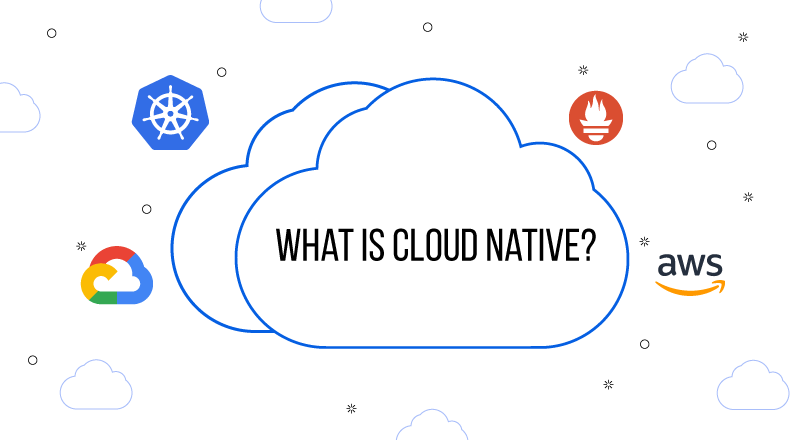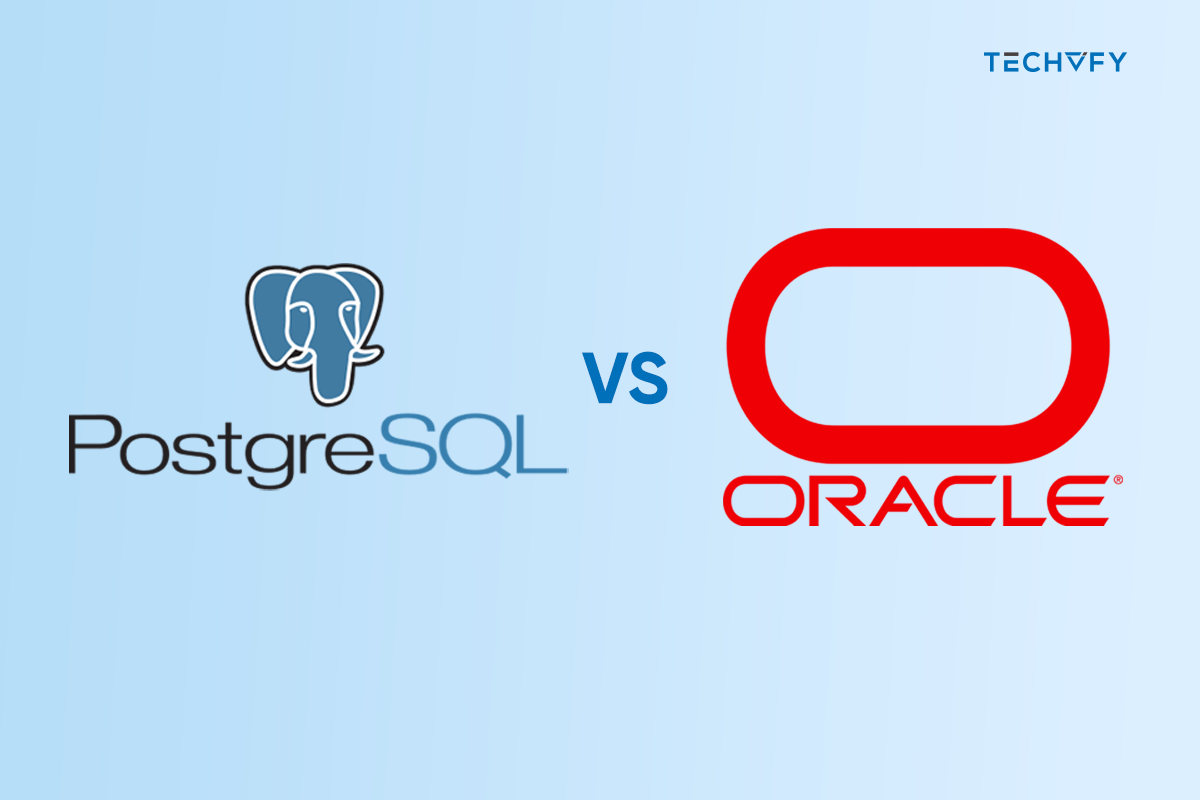Speed, agility, and resilience are key for any organization aiming to grow and surpass its competitors. Achieving these objectives increasingly relies on digital strategies, which necessitate a shift from traditional on-premises solutions to cloud-based alternatives and the modernization of operational systems. Cloud-native technology plays a crucial role in this transition, offering a method to develop and adapt application portfolios in line with market demands.
Gartner forecasts that by the year 2025, more than 95% of new digital projects will utilize cloud-native platforms, a significant increase from less than 40% in 2021. This shift indicates that businesses recognize the efficiency of cloud-native approaches in developing and deploying solutions that leverage the cloud’s core strengths, such as speed and adaptability. This article will delve into finding “what is cloud native” and the advantages of cloud-native applications.
I. What is Cloud Native?
Cloud Native is an approach to building and running applications that fully exploit the advantages of the cloud computing model. It is characterized by technologies and practices that enable organizations to develop, deploy, and scale applications in cloud environments rapidly and efficiently. Cloud-native development focuses on leveraging managed services that abstract away the underlying infrastructure, allowing developers to focus on writing code rather than managing servers.
The essence of cloud-native lies in creating applications designed from the ground up to run in the cloud instead of traditional applications that may be migrated to the cloud but still need to utilize cloud capabilities fully. This approach emphasizes automation, continuous delivery, microservices, containers, orchestration mechanisms, and dynamic management to build and maintain scalable, flexible, and resilient applications.

More Cloud-related articles:
II. Key benefits of Cloud Native
1. Accelerated Deployment Speed
The ability to quickly bring products to market is increasingly becoming the dividing line between industry leaders and those falling behind.
Organizations that can rapidly develop, deploy, and deliver value to their customers are likelier to thrive and stay ahead of disruption in a fast-evolving environment.
Modern DevOps integrates automation throughout the software delivery cycle. This includes automation in building, testing, and deploying, significantly speeding up and stabilizing the software delivery process.
Cloud-native applications enhance DevOps practices by supporting this level of automation and teamwork, which needed to be more attainable with traditional local development and server-restricted software delivery methods.
2. Enhanced Customer Experiences
To elevate customer experiences, delivering new features swiftly and engaging in ongoing iteration is crucial.
This involves adopting a mobile-first strategy in app development and adhering to user-centered design principles, including design thinking.
The current emphasis is on unlocking the potential of enterprise data to create compelling experiences for customers and employees alike. APIs are the primary method for linking large enterprise data repositories with agile front-end applications.
This approach allows organizations to leverage their longstanding investments in legacy systems by revitalizing these platforms through integration with mobile and web apps.
Given the competitive pressure from smaller, more agile startups challenging established business models, enterprises must focus on enhancing customer experiences through cloud-native applications.

3. Simplified Infrastructure Management
Cloud-native provides several ways to streamline the management of infrastructure. Initially introduced through PaaS platforms like Heroku and App Engine around ten years ago, the concept has since broadened to encompass serverless platforms such as Azure Functions and AWS Lambda.
Serverless computing allows you to deploy code as functions, which the platform executes on your behalf, eliminating the need for you to manage cloud instances, set up networks, or ensure adequate storage. Serverless handles all these aspects for you.
4. Cost Reduction via Containerization & Cloud Standards
Containers simplify managing and securing applications without being tied to the underlying infrastructure. The industry is moving towards Kubernetes for scaling container management.
Being open source, Kubernetes has garnered widespread industry support and has become the go-to for cloud resource management. Cloud-native applications gain significantly from containerization.
Together with Kubernetes, a range of potent cloud-native tools exists. This leads to standardized infrastructure and tools. Coupled with an open-source approach, it significantly cuts costs. Advanced cloud-native features like Serverless can manage fluctuating workloads and only charge for compute time by milliseconds.
This represents the peak of pricing flexibility offered by cloud native.
5. Enhance System Reliability
Previously, downtime was often seen as inevitable, and achieving fault tolerance was challenging and costly. However, with cloud-native practices such as microservices architecture and Kubernetes, creating fault-tolerant applications with built-in resilience and self-repair capabilities has become more straightforward.
This approach allows for quickly isolating issues when failures occur, preventing them from affecting the entire application. Rather than relying on traditional servers and monolithic structures, cloud-native microservices contribute to increased uptime, thereby enhancing the overall user experience.
6. Prevent Vendor Lock-in
The era of being tied to legacy vendors through long-term, restrictive contracts for proprietary hardware is over. The rise of open-source and cloud technologies has led to the widespread adoption of hybrid and multi-cloud strategies.
Organizations are now often combining on-premises data centers with one or more public cloud platforms. The focus has shifted towards ensuring portability across different clouds, eliminating dependence on a single vendor.
Challenges and Considerations of Cloud Native
| Challenges | Considerations |
|---|---|
| Choosing the Right Tools or Platforms With many options available, it can take time to determine which ones best fit your organization’s needs. It’s crucial to carefully assess your goals and requirements to make an informed decision. |
Prioritize tools that align with your specific needs and goals, and consider those with strong community support and integration capabilities. |
| Filtering Important Metrics The vast amount of metrics generated by cloud-native infrastructure can be overwhelming. Focusing on the metrics that truly matter to avoid unnecessary costs and complexity is essential. |
Focus on key performance indicators directly impacting your objectives, using monitoring tools that allow customizable dashboards. |
| Monitoring Microservices Given the high volume of data produced by microservices, monitoring them can be challenging. It requires a system that can automatically track performance and highlight issues, as manual monitoring is often not feasible due to the scale and complexity involved. |
Implement a centralized monitoring solution with automated alerts to manage the complexity of microservices architectures efficiently. |
| Managing Costs The expenses associated with deploying and maintaining cloud-native infrastructure can be significant, particularly for smaller organizations. |
Regularly review resource utilization and adopt cloud cost management tools to optimize spending and avoid overprovisioning. |
| Ensuring Security and Compliance Maintaining compliance and ensuring that only authorized users and services can access your data as security standards evolve becomes increasingly challenging. |
Utilize a zero-trust security model, conduct regular audits, and leverage observability platforms to maintain stringent security and compliance standards. |
Conclusion
Adopting a cloud-native approach allows organizations to fully leverage the benefits of cloud computing, offering scalability, flexibility, and resilience. This method emphasizes key practices such as automation, microservices, and containerization, leading to faster deployment, enhanced customer experiences, and cost efficiency. Despite the challenges in selecting tools, managing costs, and ensuring security, the strategic advantages of cloud-native technologies, like preventing vendor lock-in and enhancing system reliability, are undeniable.
Choosing the right partner is essential for businesses aiming to navigate the cloud-native landscape. TECHVIFY specializes in providing premier cloud-native services, ensuring your transition to and optimization of cloud technologies are seamless and aligned with your business goals.
Ready to elevate your cloud strategy? Contact TECHVIFY for expert cloud-native services and transform your digital infrastructure today.
TECHVIFY – Global AI & Software Solution Company
From Startups to Industry Leaders: TECHVIFY prioritizes results, not just deliverables. Accelerate your time to market and see ROI early with high-performing teams, AI (including GenAI) Software Solutions, and ODC (Offshore Development Center) services.
- Email: [email protected]
- Phone: (+84)24.77762.666




